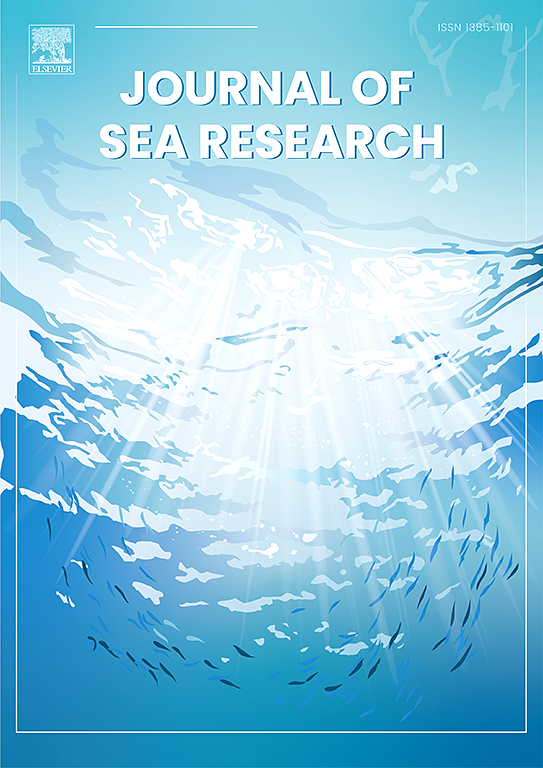Traits without boundaries: The environmental influence on biological traits across an intertidal region
IF 2.9
4区 地球科学
Q2 MARINE & FRESHWATER BIOLOGY
引用次数: 0
Abstract
Trait-based methods can present better alternatives to species-centric methods when the objective is to understand the drivers of species distribution patterns across macro-spatial scales. We employed a trait-based approach to understand benthic macroinvertebrate species distributions along the coastline of South Africa, hypothesising that the operation of selection on species' traits would produce different distributional results from the already known patterns based on taxonomic identity. We selected eight lifestyle and reproduction trait categories for 150 intertidal macroinvertebrates from 52 sites spanning three main bioregions (East, South, and West) and two transition zones (South-west and South-east) across c. 3025 km of the South African coast. We used satellite derived near-shore sea surface temperature (SST), chlorophyll-a data estimates and site location to characterise environmental conditions that may influence intertidal species and traits distribution. An RLQ analysis indicated that intertidal species trait distribution did not conform to the biogeographic patterns identified using a taxonomic approach. Further, a combined fourth corner analysis further revealed strong significant interactions of four of the eight traits (reproductive type, body form and feeding type) with environment parameters (longitude, SST and chl-a), plus weakly significant effects of latitude. Two major currents dominate nearshore waters, the cool, eutrophic Benguela on the west and the warm, oligotrophic Agulhas on the east and south, yet trait distribution grouped cool (west coast) and warm (south coast) temperate sites separately from subtropical eastern sites rather than aligning with the three main bioregions defined by species taxonomic identity. These results support the habitat templet theory, suggesting that environmental influences on species distributions operates through their effects on species traits, with chl-a/nutrient availability a key determinant of trait distributions. This results in a transition in species' traits from warm, oligotrophic to cool eutrophic conditions. This coarse transition between two oceanic regimes is further refined by species with varying trait combinations colonising from either the Indian and Atlantic oceans, resulting in the bioregions defined by species identity.
无边界性状:环境对潮间带生物性状的影响
当研究宏观空间尺度上物种分布模式的驱动因素时,基于性状的方法比以物种为中心的方法提供了更好的选择。我们采用基于性状的方法来了解南非沿海底栖大型无脊椎动物的物种分布,并假设物种性状的选择操作将产生与基于分类同一性的已知模式不同的分布结果。我们从52个地点选取了150种潮间带大型无脊椎动物的8种生活方式和繁殖特征类别,这些地点横跨南非海岸约3025公里的三个主要生物区(东、南、西)和两个过渡区(西南和东南)。我们使用卫星获得的近岸海面温度(SST)、叶绿素-a数据估计和站点位置来表征可能影响潮间带物种和特征分布的环境条件。RLQ分析表明,潮间带物种特征分布不符合分类学方法鉴定的生物地理格局。此外,联合四角分析进一步揭示了8个性状(繁殖类型、体型和摄食类型)中4个性状与环境参数(经度、海温和chl-a)的交互作用强显著,纬度的交互作用弱显著。两大洋流主导着近岸水域,即西部的富营养化Benguela洋流和东部和南部的贫营养化Agulhas洋流,但特征分布将凉爽(西海岸)和温暖(南海岸)温带地区与亚热带东部地区分开,而不是与物种分类特征定义的三个主要生物区域一致。这些结果支持了生境模板理论,表明环境对物种分布的影响是通过对物种性状的影响来实现的,其中chl-a/养分有效性是性状分布的关键决定因素。这导致了物种特征从温暖的贫营养状态向凉爽的富营养状态的转变。从印度洋和大西洋迁移来的具有不同性状组合的物种进一步细化了两种海洋制度之间的这种粗糙过渡,从而形成了由物种身份定义的生物区域。
本文章由计算机程序翻译,如有差异,请以英文原文为准。
求助全文
约1分钟内获得全文
求助全文
来源期刊

Journal of Sea Research
地学-海洋学
CiteScore
3.20
自引率
5.00%
发文量
86
审稿时长
6-12 weeks
期刊介绍:
The Journal of Sea Research is an international and multidisciplinary periodical on marine research, with an emphasis on the functioning of marine ecosystems in coastal and shelf seas, including intertidal, estuarine and brackish environments. As several subdisciplines add to this aim, manuscripts are welcome from the fields of marine biology, marine chemistry, marine sedimentology and physical oceanography, provided they add to the understanding of ecosystem processes.
 求助内容:
求助内容: 应助结果提醒方式:
应助结果提醒方式:


